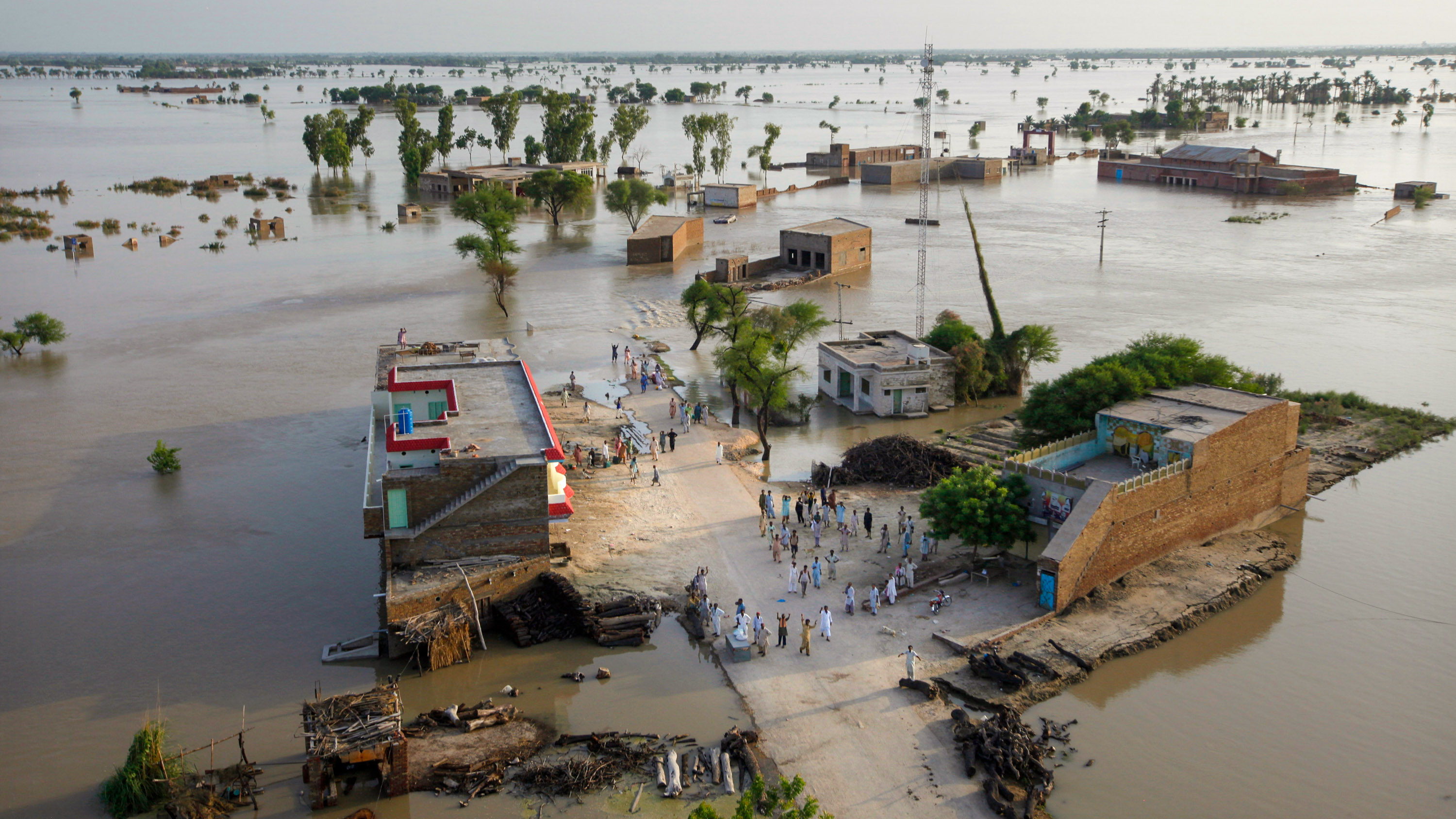The “fingerprints” of climate change are clear in Pakistan’s devastating floods
Just how big a role global warming played in intensifying the region’s wettest August in half a century isn’t certain, however.

Climate change very likely intensified the South Asian monsoon that flooded Pakistan in recent weeks, killing more than 1,000 people and destroying nearly 2 million homes.
That’s according to a new analysis by World Weather Attribution, a network of scientists who use climate models, weather observations, and other tools to determine whether global warming increased the likelihood or severity of recent extreme weather events.
In this case, however, just how big a role climate change played isn’t clear.
It’s relatively straightforward to conduct an attribution study that assesses the influence of warming in heat waves, where hotter average temperatures push up the baseline that such sweltering events take off from.
The group has precisely calculated how much climate change altered the odds of the blistering Pacific Northwest heat wave last year (such conditions would be “at least 150 times rarer without human-induced climate change”), the recent UK heat wave (climate change made it “at least 10 times more likely”), and the one in Pakistan and India earlier this year (“30 times more likely”).
But using climate models to pinpoint global warming’s role in amplifying the full monsoon season proved trickier, the researchers noted in a press statement. World Weather Attribution chalked up the uncertainty to some combination of the wide variability in heavy rainfall patterns over long periods, natural processes at work that the models may not fully capture, and the weather quirks of the territory. The Indus River basin is located at the western edge of the region’s monsoon area, where there are big differences in rainfall trends between the dry west and wet east.

On the other hand, weather records clearly show that the region’s heaviest periods of rainfall have become more intense in recent decades, by about 75% in the two hardest-hit provinces. Some models found that climate change may have increased rainfall by as much as 50% during the five wettest days of the two-month monsoon season in those areas.
“So while it is hard to put a precise figure to the contribution of climate change, the fingerprints of global warming are evident,” Friederike Otto, a senior lecturer in climate science at Imperial College London and one of the leaders of World Weather Attribution, said in a statement.
In a scientific paper released on Thursday, the team of researchers noted that a combination of meteorological forces drove the extreme rainfall. They included a La Niña event, which cools upper ocean waters and carries greater than usual rainfall across large parts of the world, coupled with unusually hot spring and summer weather across Pakistan. Those simmering temperatures also accelerated the melting of the thousands of glaciers that feed the Indus River, though it’s unknown how much that contributed to the flooding.
Climate scientists have long warned that global rainfall patterns will become more erratic as the planet warms, making both very wet and very dry periods more common. Among other factors, warmer air holds more moisture, sucks the water out of soils and plants, and alters atmospheric pressure systems. The UN’s climate panel projects that the South Asian monsoons will become more variable from year to year in the coming decades but increase in intensity overall across the 21st century.
Pakistan’s heaviest days of rain are likely to become even more extreme as temperatures tick up, World Weather Attribution found. That underscores the need for the country to fortify its river banks, homes, and other infrastructure to protect citizens—and for rich nations that have produced a wildly disproportionate share of climate pollution to do everything they can to help.
Deep Dive
Climate change and energy
The problem with plug-in hybrids? Their drivers.
Plug-in hybrids are often sold as a transition to EVs, but new data from Europe shows we’re still underestimating the emissions they produce.
Harvard has halted its long-planned atmospheric geoengineering experiment
The decision follows years of controversy and the departure of one of the program’s key researchers.
Why hydrogen is losing the race to power cleaner cars
Batteries are dominating zero-emissions vehicles, and the fuel has better uses elsewhere.
Decarbonizing production of energy is a quick win
Clean technologies, including carbon management platforms, enable the global energy industry to play a crucial role in the transition to net zero.
Stay connected
Get the latest updates from
MIT Technology Review
Discover special offers, top stories, upcoming events, and more.